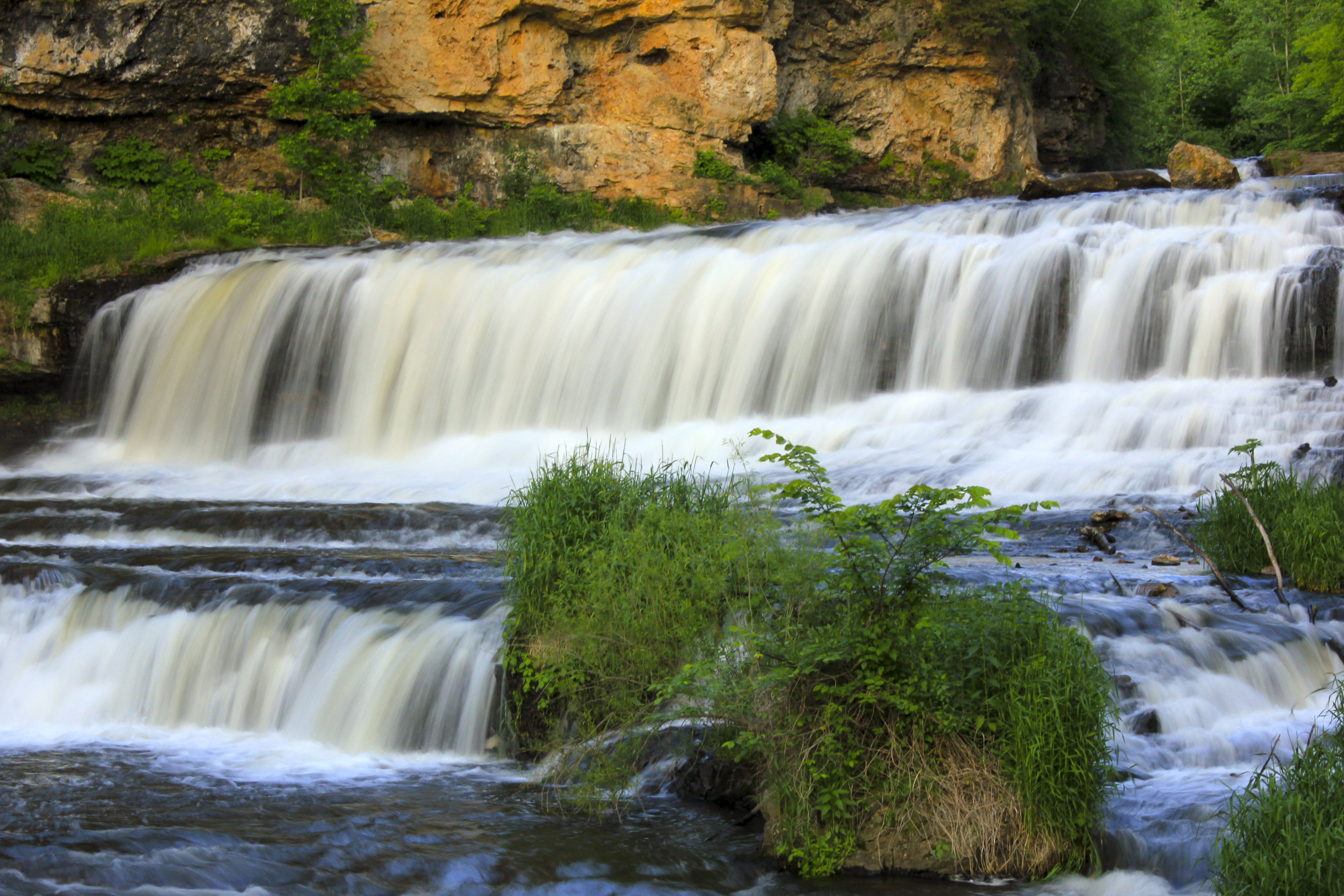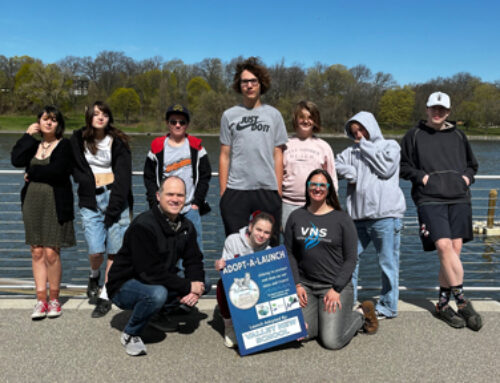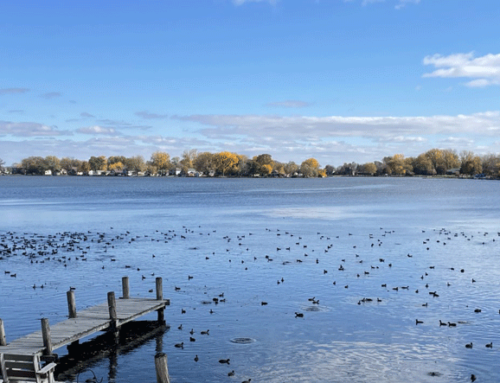On June 1st , 1886 Frank Wade went fishing on the Willow River in St. Croix County. He did have a rod and tackle, but he wasn’t really there for the fish. He was out on the water to make a statement. More specifically, to get arrested. He was, quite literally, fishing for trouble.

Waterfalls on the Willow River
A couple years earlier, the Willow River Club had bought land along the river and promised its members the sole and exclusive right to “forever” fish that stretch of the river. Wade believed that the river, along with all other navigable waters of the state, belonged to the public. He ignored the no trespassing signs put up by the club and encouraged others to do so as well. The club voiced their complaint to the sheriff, which lead to many arrests. Most were dismissed, but Wade’s case went to trial and eventually reached the State’s Supreme Court. Wade’s argument won.
Despite Wade being taken to court, the idea of waterways being owned by the public had been in place long before the incident. The original 13 states had adopted the concept from existing English law, which had been in place since 1225 when the Magna Carta was drafted. Wisconsin incorporated the existing idea into its constitution in 1848. The WI Supreme Court has continuously upheld the concept for the 170 years Wisconsin has been a state.
The Public Trust Doctrine works like this: navigable waterways are entrusted to the state (the trustee) to be managed for the benefit of the public (the beneficiary). So, the waterways of Wisconsin are owned by the public, but managed by the Department of Natural Resources for the people’s long-term benefit. Initially, this pertained mostly to transportation, as the rivers were frequently used as “highways” when Wisconsin was still very much unsettled. Without a check like this, tolls could be put into place by whoever owned the water. Could you imagine having to pay a private land owner $15 to travel from Poygan to Winneconne? Today the doctrine is extended to the public’s right water quantity and quality, scenic beauty, and recreational activity. This concept extends to wildlife as well.

Wisconsinites enjoy the right to recreate without worry of trespass or toll
The Public Trust Doctrine is one of the most important and essential elements of Wisconsin’s natural resource law because it creates a sense of ownership. Ownership facilitates a sense of stewardship. People become invested in “their” lake, “their” river, or “their” grouse haunt. No individual actually owns the water or the grouse itself, but because it belongs to no one, it belongs to everyone. As beneficiaries of the trust (the water), the public has the power to provide input in the trustee’s (the DNR’s) decision-making process. Additionally, the beneficiary holds the trustee accountable for management of these resources and can pursue litigation in the case of mismanagement.
The WDNR defines a navigable waterway as public lakes, rivers, and streams that have a bottom (bed) and side (bank), and enough water to float any boat, skiff, or canoe of the shallowest draft on a reoccurring basis. So how does this affect those who own property along a navigable waterway? “Riparian” owners hold rights to the water along their shoreline, including use of the shoreline, reasonable use of the water, and a right to access the water. But the rights of the public to use the water are held higher than the shoreline owner’s. So, you can build a dock out into the river, but it can’t impair the public’s use of the water.
For well over a century, nearly all cases involving the PTD has led to either an affirmation of or an expansion of the PTD by the WI Supreme Court. Our waters have been validated as an invaluable commercial, recreational, and aesthetic resource time and time again.
Our recommendation? Get out there and enjoy Wisconsin’s waters! Experience first hand what the Public Trust Doctrine has protected for you for over 170 years.
Winnebago Waterways is a Fox-Wolf Watershed Alliance program. The Fox-Wolf Watershed Alliance is an independent nonprofit organization that identifies and advocates effective policies and actions that protect, restore, and sustain water resources in the Fox-Wolf River Basin.
Follow the Fox Wolf Watershed Alliance’s Winnebago Waterways Program on our Winnebago Waterways Facebook page or @WinnWaterways on Twitter! You can also sign-up for email updates at WinnebagoWaterways.org.
This article was written by Austin Pethan for the Winnebago Waterways Program. Questions or comments? Contact Austin at austin@fwwa.org or (920) 920-851-4295.





